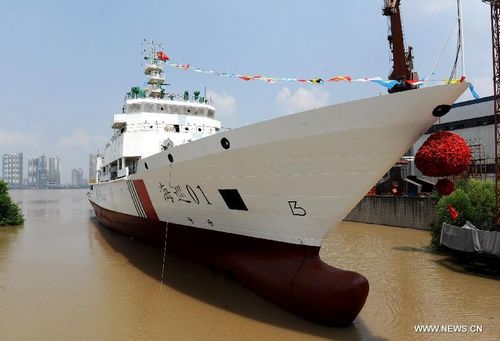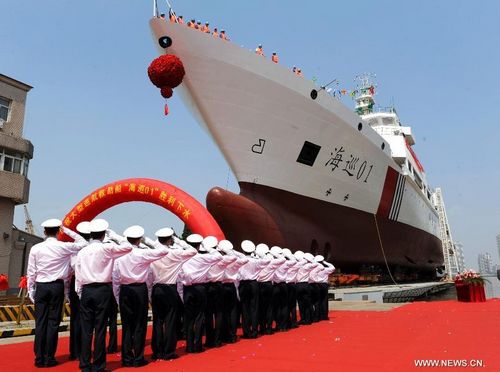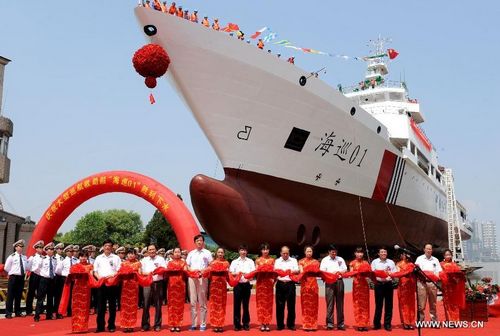China launched its largest and most advanced patrol vessel Haixun01
on Saturday in Wuhan, a city in Central China's Hubei Province, in a
move to maintain its marine sovereignty and enhance its rescue
efficiency.
The 5,418-tonnage Haixun01 is 128.6 meters in length. Its sailing speed is 37 km per hour and has a maximum sailing distance of 10,000 nautical miles (18,520 km) without refueling, said Tang Gongjie, general manager of Wuchang Shipbuilding Industry Company Ltd, the builder of the ship.
The ship can accommodate 200 people rescued at sea and will be equipped with devices to offer basic medical treatment and surgeries. The vessel also has a helipad so airborne search and rescue missions can be carried out from it.
China currently has two 3,000-tonnage patrol vessels, Haixun 11 and Haixun 31, and a 1,500-tonnage patrol vessel, Haixun 21, to handle maritime inspection, salvage and maritime traffic management in the country's coastal waters.






.jpg)
.jpg)




%2BNaval%2Bair%2Bforce%2Bstarts%2Bfirst%2Bflight%2Bin%2B2015%2Bin%2Beast%2BChina.%2B(2).jpg)



1 comments:
General Principles of marine inspection companies
The time-honoured way to test steel plating is by striking it with a hammer. The advantage of this test is
that it replicates a mild or moderate collision with flotsam, or a harbour wall, and so indicates whether
the stem, or plating or an A-bracket, or any vulnerable part, is strong enough to withstand this level of
impact. It is also an indication of how thick the steel is to an experienced independent marine surveyor. Hammer testing is
quick, reliable, inexpensive, repeatable, largely unaffected by survey conditions such as wet or windy
weather, and is good at establishing whether there is severe corrosion. Limitations include a lack of what
might be called “fine tuning” in that even a skilled surveyor can seldom detect such differences as 20%
or 40% rusting where the remaining plating still retains a good amount of sound steel. Hammer testing
is particularly useful down in the bilge where corrosion is common and often serious. Here it can be
difficult to get the steel surface clean enough to use an ultrasonic tester with confidence. Also there are
places so far down below the cargo surveyor Dubaithat he cannot hold a sonic transducer against the steel, whereas
he can strike effectively with a long-handled hammer. This technique is also good in other locations such
as in a chain locker where access is poor but the plating or framing is within reach of a hammer with a
long handle. Another feature of hammer testing is its simplicity. With ultrasonics an unfailing source of
electricity is essential, not to mention calibrating, recording, adjusting, and so on. There is nothing so
“bomb-proof” as a hammer, in contrast to an electronic instrument. A limitation to hammer testing is that
it can seldom be used on well-painted steel without written permission from the owner or his
representative. Hard epoxy paint is likely to be damaged by serious hammering. Even moderately
unenergetic hammering will destroy the paint on steel as it chips away the covering right down to the base
metal and, as a result, building up a new paint coat has to start with flatting off the old paint and
beginning with new primer, right through coating by coating, to the final high quality continuous finish.
For more: http://www.marinesurveyordubai.com/marine-surveyor-dubai-why-us/
Post a Comment